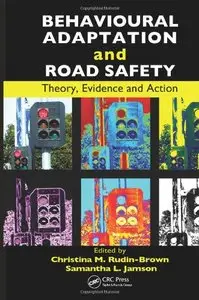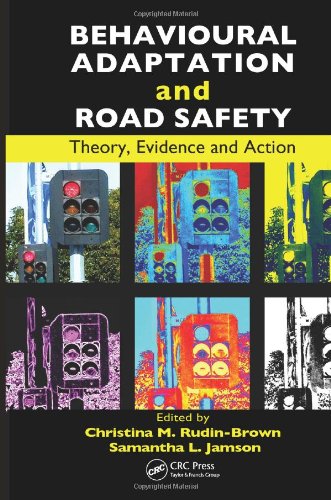Behavioural Adaptation and Road Safety: Theory, Evidence and Action by Christina Rudin-Brown and Samantha Jamson
English | ISBN: 1439856672 | 2013 | 467 pages | PDF | 43 MB
English | ISBN: 1439856672 | 2013 | 467 pages | PDF | 43 MB
Despite being an accepted construct in traffic and transport psychology, the precise nature of behavioural adaptation, including its causes and consequences, has not yet been established within the road safety community. A comprehensive collection of recent literature, Behavioural Adaptation and Road Safety:
Theory, Evidence, and Action explores behavioural adaptation in road users. It examines behavioural adaptation within the context of historical and theoretical perspectives, and puts forth tangible—and practical—solutions that can effectively address adverse behavioural adaptation to road safety interventions before it occurs.
Edited by Christina Rudin-Brown and Samantha Jamson, with chapters authored by leading road safety experts in driver psychology and behaviour, the book introduces the concept of behavioural adaptation and details its more relevant issues. It reviews the definition of behavioural adaptation that was put forward by the OECD in 1990 and then puts this definition through its paces, identifying where it may be lacking and how it might be improved. This sets the context for the remaining chapters which take the OECD definition as their starting points.
The book discusses the various theories and models of behavioural adaptation and more general theories of driver behaviour developed during the last half century. It provides examples of the "evidence" for behavioural adaptation—instances in which behavioural adaptation arose as a consequence of the introduction of safety countermeasures. The book then focuses on the internal, "human" element and considers countermeasures that might be used to limit the development of behavioural adaptation in various road user groups. The book concludes with practical tools and methodologies to address behavioural adaptation in research and design, and to limit the potential negative effects before they happen.
Supplying easy-to-understand, accessible solutions that can be implemented early on in a road safety intervention’s design or conception phase, the chapters represent the most extensive compilation of literature relating to behavioural adaptation and its consequences since the 1990 OECD report. The book brings together earlier theories of behavioural adaptation with more recent theories in the area and combines them with practical advice, methods, and tangible solutions that can minimise the potential negative impact of behavioural adaptation on road user safety and address it before it occurs. It is an essential component of any road safety library, and should be of particular relevance to researchers, practitioners, designers, and policymakers who are interested in maximizing safety while at the same time encouraging innovation and excellence in road transport-related design.



